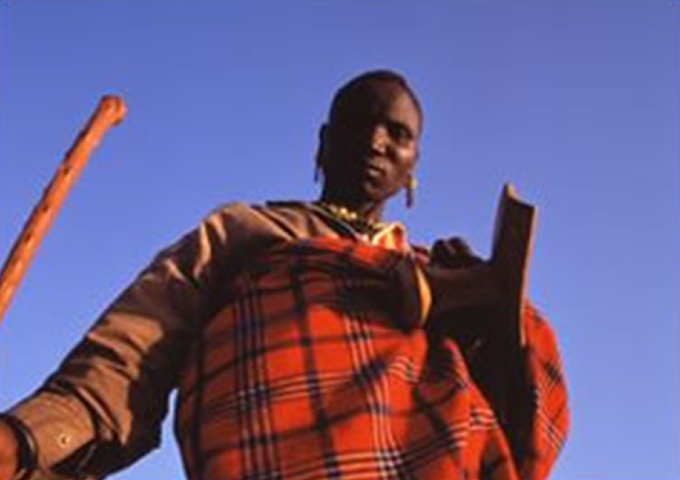Boys and Men
Trousers: A karimojong man is not supposed to wear trousers. But does not move naked either. The traditional dress code for men and boys is a short and they are expeted to wrap themselves with a special regalia called Nyathukok, which covers the whole body.
This dress code is supplemented by special bracelets which are worn around the arms,coupled with a necklace made of beads or animal hides.
If a man wears trousers ,the elders view it as a show of disrespect because a trouser is against the cultural dressing norm in the region.
A man’s responsibility at home is to defend the family assets including livestock, land and even offer additional support to any Karimojong family during invasion by intruders. A karimojong man also ensures that the cultural setup is maintained and passed on to the next generation and he thinks beyond the home environment.That is why a man can move beyond the boundaries as far as Kenya or Acholi to graze cattle and copy new techniques of adaptability from neighbors.
A boy at 13 to 17 years of age must be a shepherd of a minimum of 100 goats and sheep to keep abreast with a typical lifestyle of an adult. This is usually a form of induction into adulthood before one graduates into a real man ,according to theculture.
Boys also wear special jewellery around theor arms for identity purposes in case foreigners come raid.
Women and Girls
Kakrimojong women and girls wear a special apparel known as Nyemarinda, a skirt which is worn by all. This skirt,mostly in a brown and reddish colour ,should protect the womans body as she goes about her daily errands.
The woman can also wrap herself with a special regalia especially when she is pregnant to offer self-protection as she goes about with her work.
Her main role is to bear children, take care of them and to cultivate food for home consumption. The man only opens the home for cultivation.
While the man is away , a woman takes charge of the home security and she also looks after the remaining livestock which provide milk for the children.
A Karimojong woman has to construct and rehabilitate a home and ensure that building materials for the house are available in case replacement is needed.
A Village home- Manyatta
A village in karamoja comprises of a homestead which is called Manyatta .A Manyatta refers to grass thatched houses built in a defensive way in case of raids.When entering the grass thatch house ,one has to enter head first.
Lomongin Lochum says a typical Manyatta is specially built, with the ehad of the familys house in the centre.The other houses belonging to his wives surround his while the children surround the wives.The livestock is kept between the husband and his wives.
If cattle raiders come, the children alert their fathers who immediately takes charge.
Behind the Manyatta ,there is isolated space left as their toilet.Ludet Lagak, an elderly Karimojong man in Lokitelaebu village ,Kotido district observed that they have lived witout toilets for a long time.’I am now 81 years, but I have never fallen sick because of having no toilets ……..’
Respect for the Gods
The karimojong people respect their gods and occasionally offer sacrifices in appreciation for what the gods have done. Panyangara sub-county has a shrine confined by trees. When one cuts any tree in a shrine, they evoke the gods and can only repent by providing five drums of abuutia (a local drink) to the elders,one huge bull , a goat and a sheep to appease the gods.
Marriage
According to karimojoing cultural setting, the number of livestock that a man can offer for marriage depends on the status of the girls family. If she comes from a wealthy family, one will have to aprt with some cows before marrying the girl.
Bukol Lukwang an elder at kacheri subcounty says on average a man must offer a minimum of 100 cattle , which include goats before marrying a karimojong girl, 200- 400 if they come from wealthy families.
The boy or man gets support from his peers and village mates who provide him with anumber of animals.He then turns to his family members for more support.


